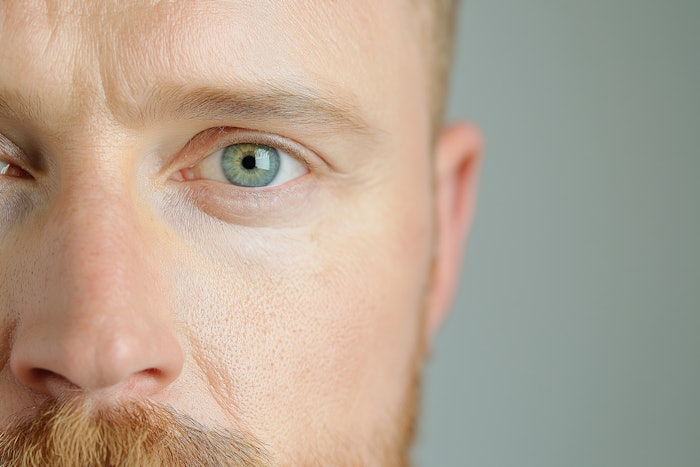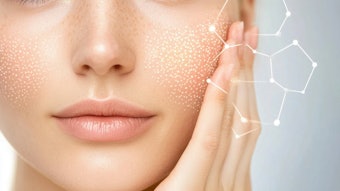
Men are changing the landscape of aesthetic medicine as it continues to evolve. Male patients, who were often viewed as secondary to cosmetic enhancement, now account for a constantly rising number of aesthetic consultations and procedures. This transformation is not just cultural but also clinical, necessitating a reassessment of both practice and theory.
Log in to view the full article
Men are changing the landscape of aesthetic medicine as it continues to evolve. Male patients, who were often viewed as secondary to cosmetic enhancement, now account for a constantly rising number of aesthetic consultations and procedures. This transformation is not just cultural but also clinical, necessitating a reassessment of both practice and theory.
Customizing procedures for male patients involves more than just changing the dosage or incision lines. It necessitates a complex grasp of masculine anatomy, aesthetic values and psychosocial motivations. The templates created for female patients must give way to a customized, precision-based approach made especially for masculine characteristics and objectives.
Structural Differences: Masculinity: Form and Function
Masculine facial anatomy differs significantly from female anatomy in terms of skeletal structure and soft tissue distribution. Men typically present with:
- A more pronounced supraorbital ridge and a flatter midface contour
- Wider, squarer mandibles with a greater chin projection
- Thicker skin with increased collagen density
- More active and larger facial muscles
These anatomical distinctions affect surgical and nonsurgical methods. For example, when performing blepharoplasty on male patients, retaining some upper eyelid fullness is crucial to achieving a natural, manly appearance. Overresection can feminize or hollow out the orbital area, resulting in an aesthetic mismatch.
Similarly, with rhinoplasty, the goal is generally to retain or improve nasal strength while avoiding over-refinement of the dorsum or tip, which can compromise the masculine profile. A careful balance between volume and angularity is necessary for chin augmentation or jawline reshaping procedures to produce outcomes that convey power without being overly dramatic or fake. Customizing procedures for male patients involves more than just changing the dosage or incision lines. It necessitates a complex grasp of masculine anatomy, aesthetic values and psychosocial motivations.Courtesy of Solomon Azouz, MD
Customizing procedures for male patients involves more than just changing the dosage or incision lines. It necessitates a complex grasp of masculine anatomy, aesthetic values and psychosocial motivations.Courtesy of Solomon Azouz, MD
Customization Versus Commodification
Male aesthetic aspirations are diverse, and rising demand has created opportunities and challenges. While it may be tempting to use female-centric protocols or "plug-and-play" treatment paradigms, doing so risks patient dissatisfaction and poor aesthetic results.
Customization begins with the consultation. Surgeons must interact with male patients differently, emphasizing clarity, function and outcome-oriented planning. Male patients commonly seek:
- A more refreshed or alert appearance than a youthful one
- Improved face definition, especially in the jawline and chin
- Corrections that preserve character and power rather than eliminating age completely
Technology plays a vital role in this. High-resolution imaging, 3D morphing and facial mapping enable exact visualization and education, allowing patients to appreciate the benefits of modest modifications without overcorrection.
Injectable Strategy: Precision and Modesty
Male non-surgical procedures such as Botox, dermal fillers and biostimulators require anatomical accuracy and self-control. Overuse or misplacement of injectables can cause feminization or apparent deformity, especially in high-movement areas.
Neurotoxin administration should focus on stronger, hypertrophic facial muscles. Men frequently require more units, although they benefit from more conservative distribution to avoid a frozen or artificial appearance. Maintaining some degree of brow movement and downward angulation, for example, helps to keep a manly look in the glabella.
When using dermal fillers, focus on boosting linear contours such as the mandibular angle, chin projection and lateral cheek, rather than the medial cheek fullness that distinguishes more feminine outcomes. Often, the idea is to sharpen and define rather than soften or volumize.
Psychological Considerations: Identity and Intent
Beyond anatomy and the dosage, psychological sensitivity is crucial. Male patients may present with various motives and expectations. Some people want classic masculine characteristics like chiseled features and a rough build, while others may want to address perceived flaws or look less tired without making major changes.
Importantly, male patients frequently approach treatment with greater trepidation. They may be concerned about overcorrection, the visibility of results or the sense of vanity. Building trust and being transparent are essential when addressing these issues. Often, a steady, low-downtime approach is more desirable than a dramatic one-time intervention.
In certain circumstances, masculinity itself is reinterpreted as fluid, individualized and adaptable. Customization entails being open to how each patient defines their aesthetic identity, rather than imposing rigid models.
Setting a New Standard
The modern aesthetic profession must grow to satisfy male patients' needs in a customized, physically sound, and psychologically attentive manner. It is not sufficient to provide processes that "also work for men." We must create protocols, methodologies and educational materials with male-specific results in mind.
Incorporating masculine aesthetics into a medical practice is more than merely growing the patient base. It is about raising the standard of care and acknowledging that genuine customization is the future of aesthetic medicine. As more men are seeking to improve their appearances, it is our obligation as surgeons to produce results that are both technically precise as well as true to the patient's identity.
About the Author:
Solomon Azouz, MD is a board-certified plastic surgeon who specializes in aesthetic and reconstructive surgery. He is dedicated to advancing customized care and natural outcomes using anatomically informed, patient-centered approaches.











